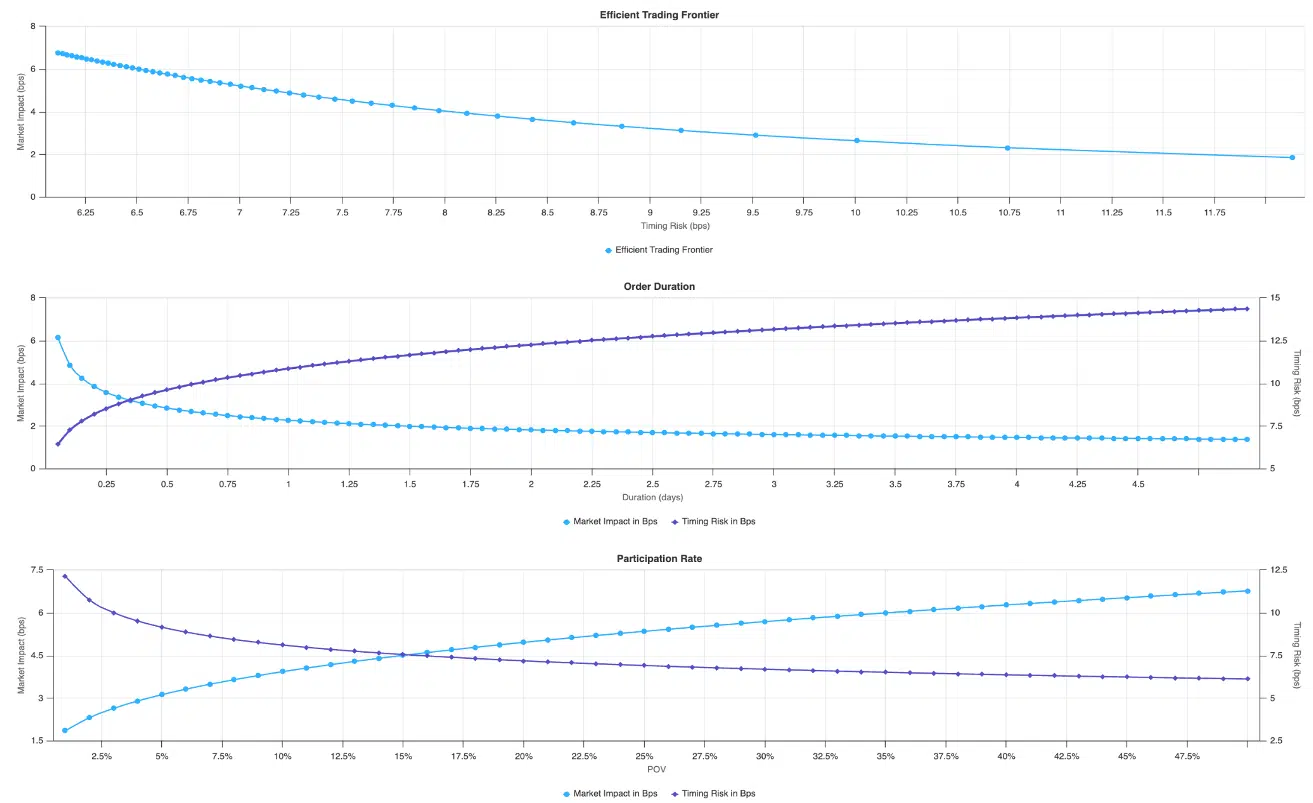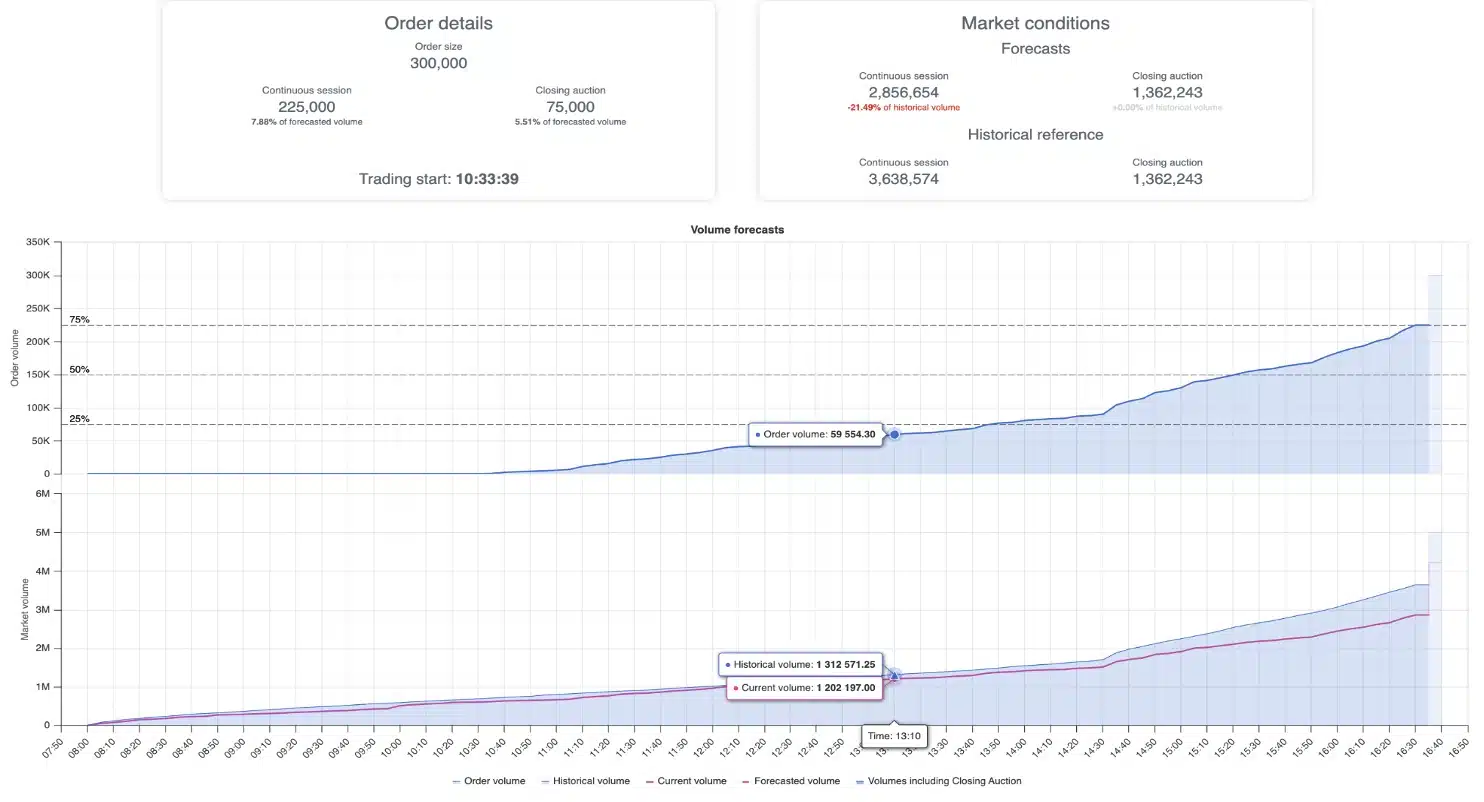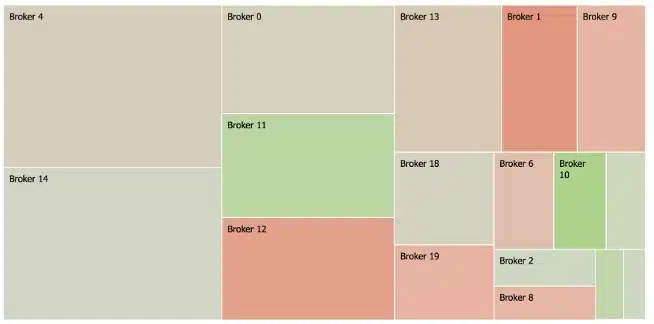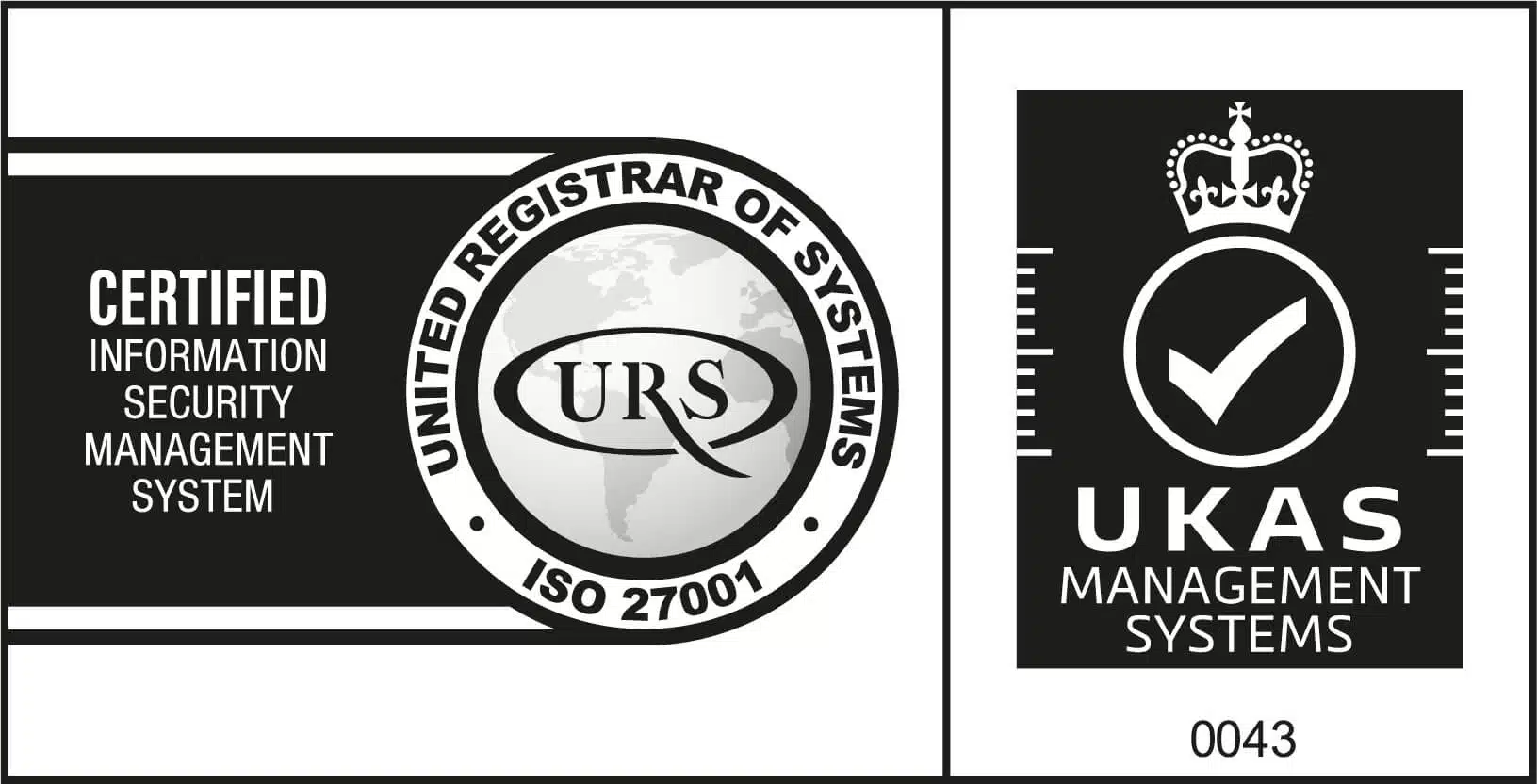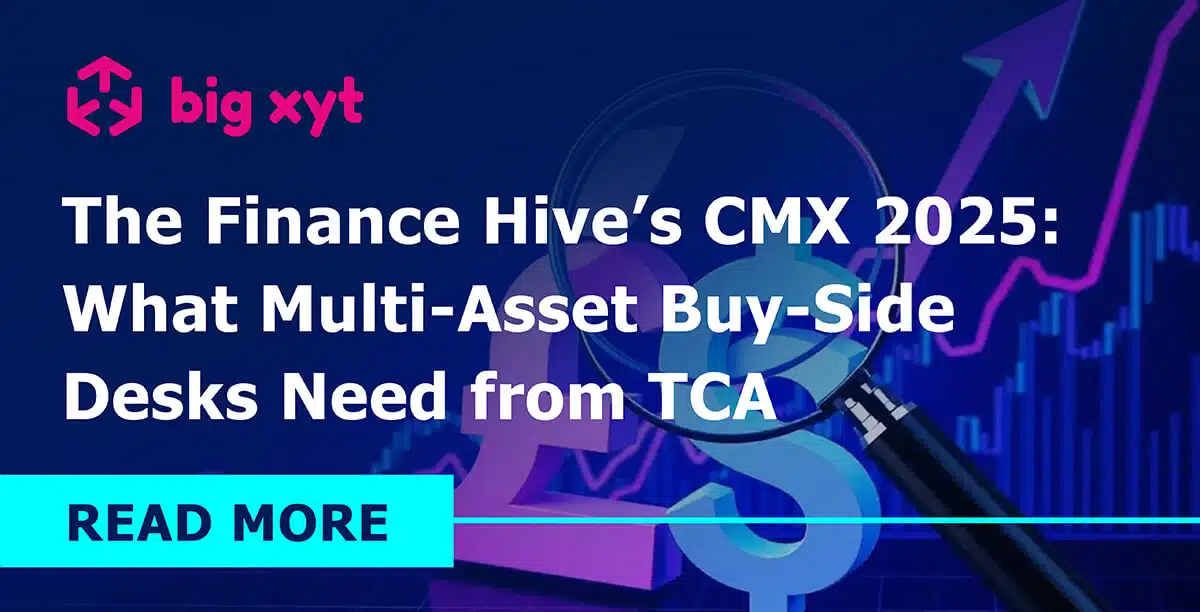
At The Finance Hive’s CMX 2025, our TCA workshop focused on how trading desks are adapting their daily workflows – using analytics to drive more informed conversations with portfolio managers and brokers and to support continuous improvement in execution. As desks handle more asset classes, more complexity and tighter resources, the role of TCA is expanding from passive measurement to active collaboration.
This includes:
- Informing pre-trade planning
- Identifying routing or timing issues
- Improving broker conversations with data
- Building a clearer feedback loop between execution and investment teams
Pre-Trade TCA: Cost/Impact Estimate
And going beyond top-line metrics:
- In equities: Determining where block trades can be executed with minimal market impact, tracking liquidity shifts throughout the day and assessing venue-specific execution quality.
- In fixed income: Using RFQ data not just to validate fills, but to understand dealer behaviour, quote timing and execution consistency – including RFQ quotes that don’t result in trades.
Data Quality: Still a Pain Point
Data quality came up repeatedly as a core challenge. Timestamps that drift. Inconsistent quote formats. Missing data around how a trade was executed.
Participants agreed: without transparent, clean and normalised data, TCA is unreliable – and potentially misleading. Several attendees shared practical efforts to enrich their data, including tagging trades with execution intent, timing information and other strategy-related context.
Pre-Trade TCA: Addressable Volumes
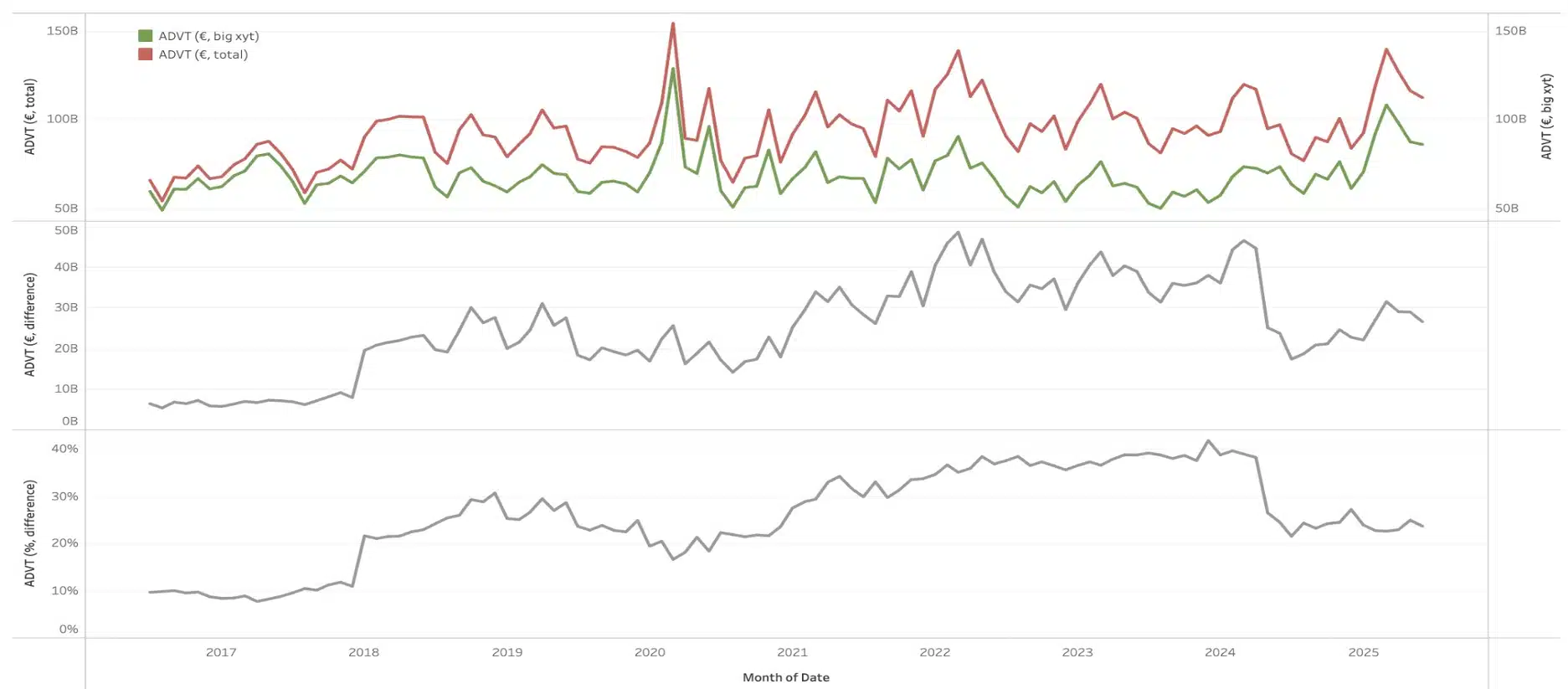
The goal? TCA results that reflect what actually happened – and why – not just whether a fill was inside the spread.
Tailoring Tools to the Desk
A key workshop theme was how TCA requirements vary widely across desks. Some teams prioritise high-level summaries to guide execution decisions. Others focus on pre-trade modelling or RFQ feedback loops. Quantitative teams prefer raw data, with access via APIs for algorithm development and research. Some desks want access to all of this information.
TCA platforms need to support all of these requirements – and evolve with them.
Applying Analytics in Practice
While the keynote session touched on AI-enabled broker selection, our workshop focused more on real-world implementation. We discussed how clustering techniques – grouping securities based on trading metrics like order size, frequency and venue interaction – can help traders to guide their brokers to select more suitable strategies and remove bias from routing decisions.
The emphasis wasn’t on automation for its own sake. It was on building tools that reflect the complexity of execution – and help traders to optimise their strategies and make better decisions.
Pre-Trade TCA: Execution Strategy – Urgency

Looking Ahead
The overarching sentiment from both the keynote session and our workshop was clear: TCA should be embedded into the daily workflow – not relegated to a quarterly ‘after the fact’ report. It should support decisions before, during and after execution.
Some questions desks are asking themselves:
- Are we measuring the right things for each asset class?
- Can we act on what our TCA is telling us?
- Are our PMs and traders using it to optimise strategy – or just to meet regulatory requirements?
For many firms, the answers are changing. TCA is no longer just about validating past performance – it’s helping shape what happens next.
Post-Trade TCA: Broker Performance
To find out more about how our TCA and execution analytics solutions can support your firm’s strategic execution and performance measurement, please visit https://tca.big-xyt.com.


